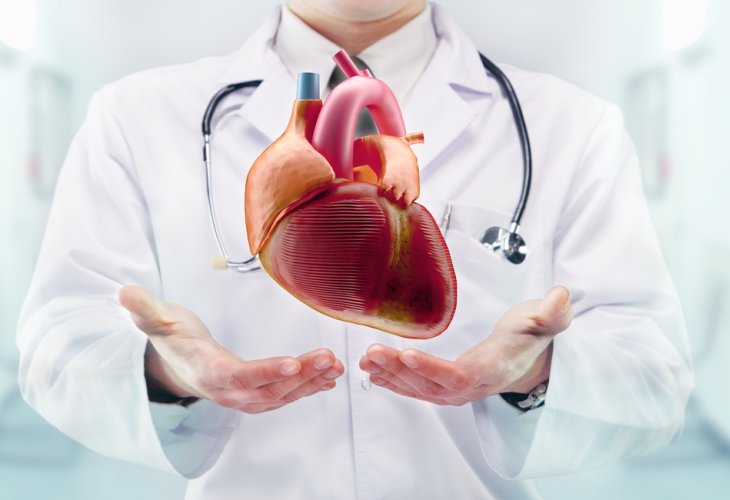International Heart Day: Everything You Need to Know About the Heart
What is heart failure, what causes it, and how is it treated? In honor of International Heart Day, everything you should know!
 (Photo: shutterstock)
(Photo: shutterstock)The heart is a hollow muscular organ the size of a fist located in the chest, beneath the sternum. It is part of the blood transport system in our body. Besides the heart, the circulatory system includes various blood vessels, the lungs, and the blood itself. The function of the circulatory system is to transport oxygen to tissues, enabling metabolism and our ability to function. Essentially, the heart acts as a pump made of muscle, with blood vessels entering and exiting it. The heart's role is to provide the driving force for blood flow in the vessels, similar to a water pump pushing water through pipes. In addition to muscle, the heart has valves ensuring correct blood flow direction, an electrical system responsible for the heart's required pace, and vessels nourishing the heart itself.
Heart Failure
About 180,000 Israelis suffer from heart failure, a condition where the heart does not perform its function properly. This usually occurs due to poor heart function. Reduced muscle contraction caused by a scar or muscle weakness is the classic cause of heart failure. Heart failure also happens in cases where the heart "contracts" well, due to a leak or stenosis in the heart valves, muscle rigidity preventing the pump from filling, or heart rhythm disturbances. Heart failure can range from mild cases affecting only physical exertion to severe cases causing distress even at rest. It is a chronic disease that can remain stable for many years or worsen over time. The progression is characterized by fluctuations between clinical stability and worsening symptoms with recurring hospitalizations.
What Causes Heart Failure?
Anything that can malfunction in the heart system will cause heart failure.
- Coronary disease and heart attack - The most common case is a heart attack where blockages in the heart arteries prevent adequate oxygen from reaching the heart, causing muscle scarring, thus limiting the pump’s functionality.
- Valve leakage or blockage - The heart struggles to propel blood or ejects it backward, losing its efficiency.
- Hypertension - The heart struggles against high pressure. Over time, changes in the muscle occur, leading to thickening, rigidity, and eventually fatigue.
- Electrical and heart rhythm problems - Conditions where heart muscle operates irregularly, too fast, or asynchronously, leading to decreased cardiac output and subsequent muscle deterioration.
- Primary muscle diseases: Structural and/or functional muscle problems can stem from genetic causes, inflammation, toxic impact from alcohol, drugs, and certain medications, as well as foreign substance infiltration. This might involve storage diseases where sugar, fat, or iron accumulates due to metabolic issues. Another related condition is amyloidosis – protein deposits in the heart muscle forming plastic-like layers severely impairing muscle properties.
What Are the Symptoms of Heart Failure?
Symptoms can vary widely. Typically, patients experience breathing difficulties—initially during exertion and later also at rest (indicative of advanced heart failure). Another common complaint is difficulty breathing while lying down, typically requiring pillows or sitting to allow fluid clearance from parts of the lungs. Another symptom is edema, usually starting in the legs and later affecting the abdomen and other areas. Common symptoms include weakness exacerbated by low blood pressure.
How Is It Diagnosed?
Diagnosis involves evaluating the patient’s complaints, primarily shortness of breath or exertional difficulty, and edema. Based on these complaints, the doctor conducts a physical examination and refers the patient for additional tests, such as ECG, chest X-ray, echocardiogram, and blood tests. Subsequently, if necessary, the doctor investigates the underlying cause, recommending advanced tests, such as heart imaging, catheterization, or MRI.
What Are the Risks?
Heart failure severely impacts the patient’s and their family's quality of life, work ability, financial strain, recurring hospitalizations, and mortality. The key statistic is that heart failure patients have higher mortality rates—some develop rhythm disturbances and die suddenly, some from recurring hospitalizations, and various multi-system complications (such as infection) or due to terminal heart pump failure.
What Are the Treatments?
Treatments fall into symptomatic and disease-specific categories. To improve patient wellbeing, diuretics may be prescribed to eliminate excess fluid, and other treatments target disease causes (if known), for instance, treating atherosclerosis and clearing/bypassing heart artery blockages, managing hypertension, and stopping alcohol and other heart-damaging medications. A third type of treatment aims to enhance prognosis independent of specific disease through maintaining muscle integrity. These treatments include medications and the implantation of a defibrillator pacemaker. In terminal heart failure and critical conditions, heart-stimulating drugs are used. These are not effective long-term, hence alternatives to the existing heart are necessary: artificial heart or heart transplantation. In recent years, there is a trend to develop unique medications for different diseases according to the molecular mechanism. Additionally, with increasing life expectancy, heart failure prevalence rises, particularly in older age. A certain percentage of heart failure patients over age 70 (about 10%) are due to amyloidosis. Until recently, there was no specific treatment for this severe, progressive disease. Now, novel drugs inhibit liver protein production or amyloid protein crystallization. These significantly slow disease progression, reducing mortality and hospitalizations.
Prof. Micha'el Arad is a senior doctor at the Heart Failure Institute and head of the Cardiomyopathies and Genetic Heart Diseases Clinic at Sheba Medical Center, Tel Hashomer.

